The Mandevilla plant is a beautiful flowering vine. It’s a popular choice for gardeners as it’s relatively easy to care for and provides abundant, vibrant blooms throughout the growing season. There are many different types of Mandevilla plants, each with unique features. While all Mandevillas are beautiful, they can vary greatly in size, shape, and color. Let’s check out how to grow and care for Mandevilla in your garden below.
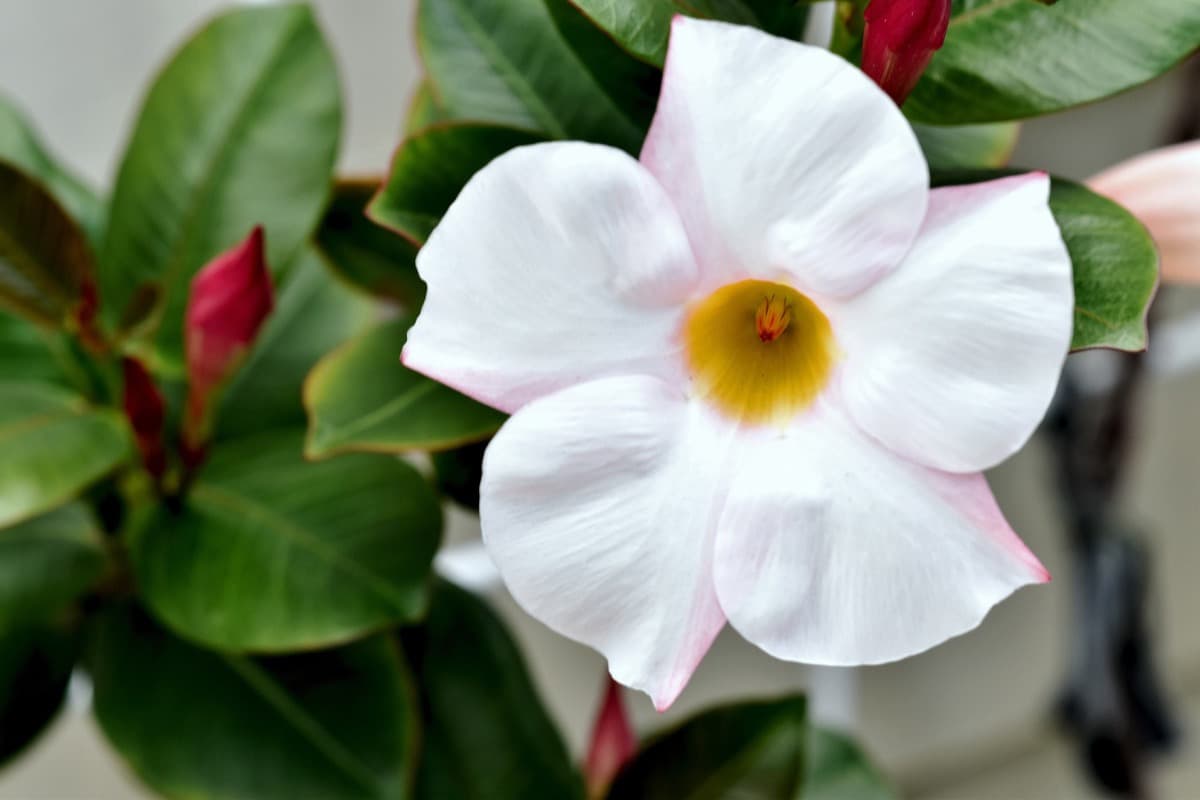
When choosing a Mandevilla for your garden, it is important to consider the plant’s growth habits and needs. Some Mandevillas are vines, while others are shrubs, so select a plant that fits well into your landscape. Growing and caring for a Mandevilla plant in your garden can be rewarding. The blooms of this tropical flower will add unique color and texture to your outdoor space while also providing food and shelter to beneficial insects.
With proper care, you can enjoy the beauty of these exotic flowers all season long. Care must be taken to keep your Mandevillas healthy and vigorous: provide adequate sunlight and water regularly, fertilize periodically, prune as needed, protect from pests, and keep an eye out for diseases. If you follow these simple steps, you’ll soon have a stunningly colorful addition to your garden that will thrive for years.
How to grow and care for Mandevilla in your garden
Types of Mandevilla plants
- Mandevilla sanderi – The Mandevilla sanderi is a beautiful flowering plant. The plant has large, bright pink flowers that bloom from June to September. Bees and butterflies pollinate the flowers. The plant grows about 3 feet tall and is perfect for adding color to any garden.
- Mandevilla boliviensis – The plant grows as a vine and can reach up to 3 meters in length. The leaves are opposite, elliptical, and measure up to 12 centimeters long and 5 centimeters wide. The flowers are white or pinkish-white, with five petals. They grow in clusters of two or three and measure up to 5 centimeters across.
- Mandevilla laxa – Mandevilla laxa is a fast-growing, evergreen climbing vine. It can produce large, fragrant white flowers. This vine is a popular garden and can cover walls, fences, or trellises. It does not require much pruning. However, it can become invasive if not kept in check.
In case you missed it: How to Grow and Care for Lantana in Your Garden
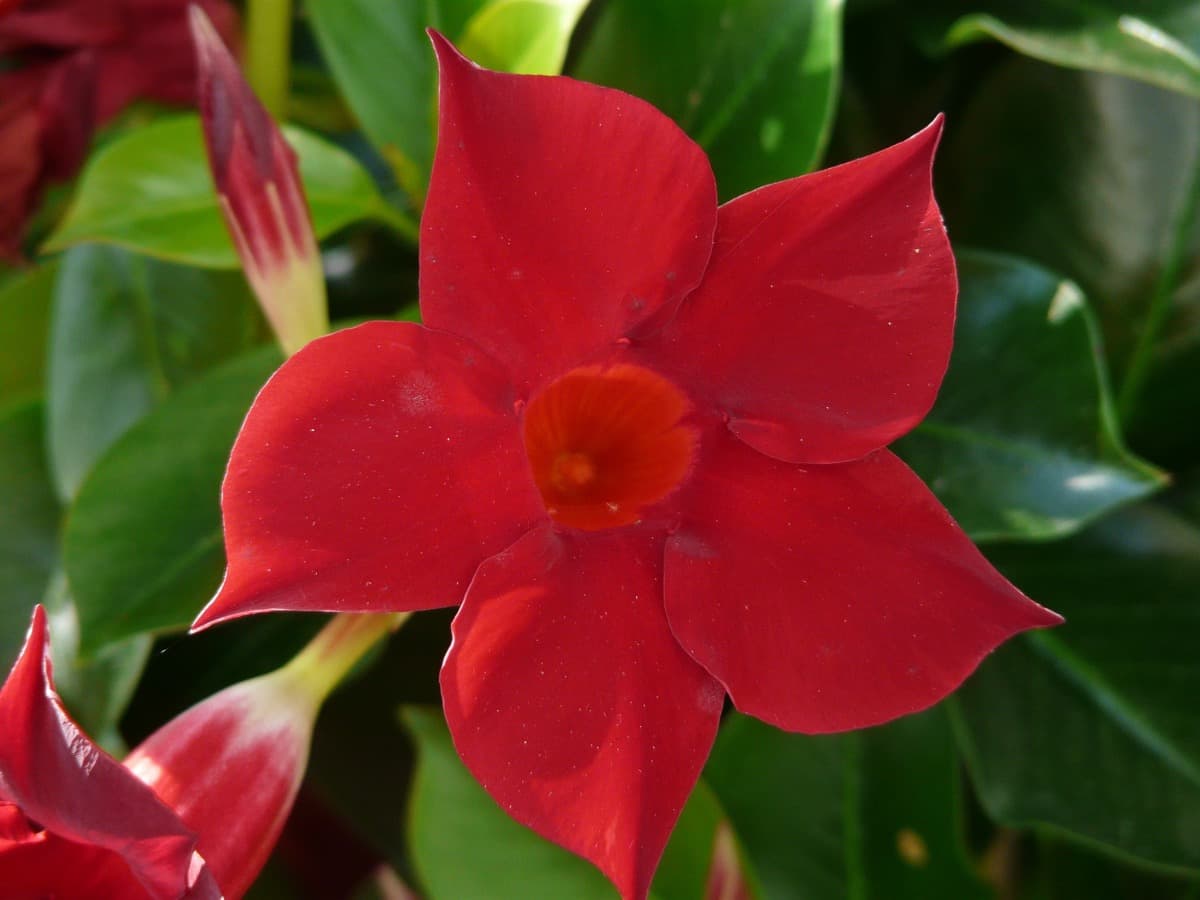
Climate suitable for growing Mandevilla in the garden
Mandevilla is a tropical plant that loves hot, humid weather. You can grow Mandevilla in your garden in mild winters and warm summers. When growing Mandevilla, choosing a location with full sun and well-drained soil is important. This tropical plant will not tolerate frost, so if you live in an area with cold winters, it is best to grow Mandevilla in containers that can be brought indoors when the temperature drops.
Mandevilla is a fast-growing plant, so regular pruning is necessary to keep it looking its best. Mandevilla is a tropical plant that loves the sun. It needs at least six hours of sunlight each day to flower well. If you live in an area with hot summers, provide some afternoon shade for your Mandevilla vine. It will still flower, but the blooms will be less showy.
Soil requirement for growing Mandevilla in the garden
To grow Mandevilla in the garden, you need a well-drained soil mix with a pH of 6.0 to 7.5. You can grow Mandevilla in the sun or partial shade, but it will bloom best in full sun. Choose a planting site with well-drained soil to ensure your Mandevilla plant has the best chance for a long and healthy life.
Consider amending it with organic matter to improve drainage if you have heavy clay soil. Adding organic matter will also help maintain consistent moisture levels in the soil, which is critical for this tropical plant. You should check the soil’s moisture level, as excess or too little can lead to problems for your Mandevilla.
The best soil for growing Mandevilla is rich, well-drained soil. Mandevilla plants do not like wet or soggy soils, so it is important to ensure that the soil you use is well-draining. You can improve drainage in your soil by adding organic matter. You may consider raised beds or containers to grow your Mandevilla plant if you have heavy clay soils.
Water requirement for growing Mandevilla in the garden
The plant can withstand long periods of drought and can be grown in arid regions. However, it will flower and fruit better with regular watering. Water Mandevilla deeply but infrequently to encourage deep root growth. Allow the soil to dry between watering. When watering your Mandevilla plant, it is important to keep a few things in mind. First, Mandevilla is native to tropical regions and requires consistent moisture to thrive.
In case you missed it: How to Grow and Care for Rubber Plants Indoors: A Beginners Guide
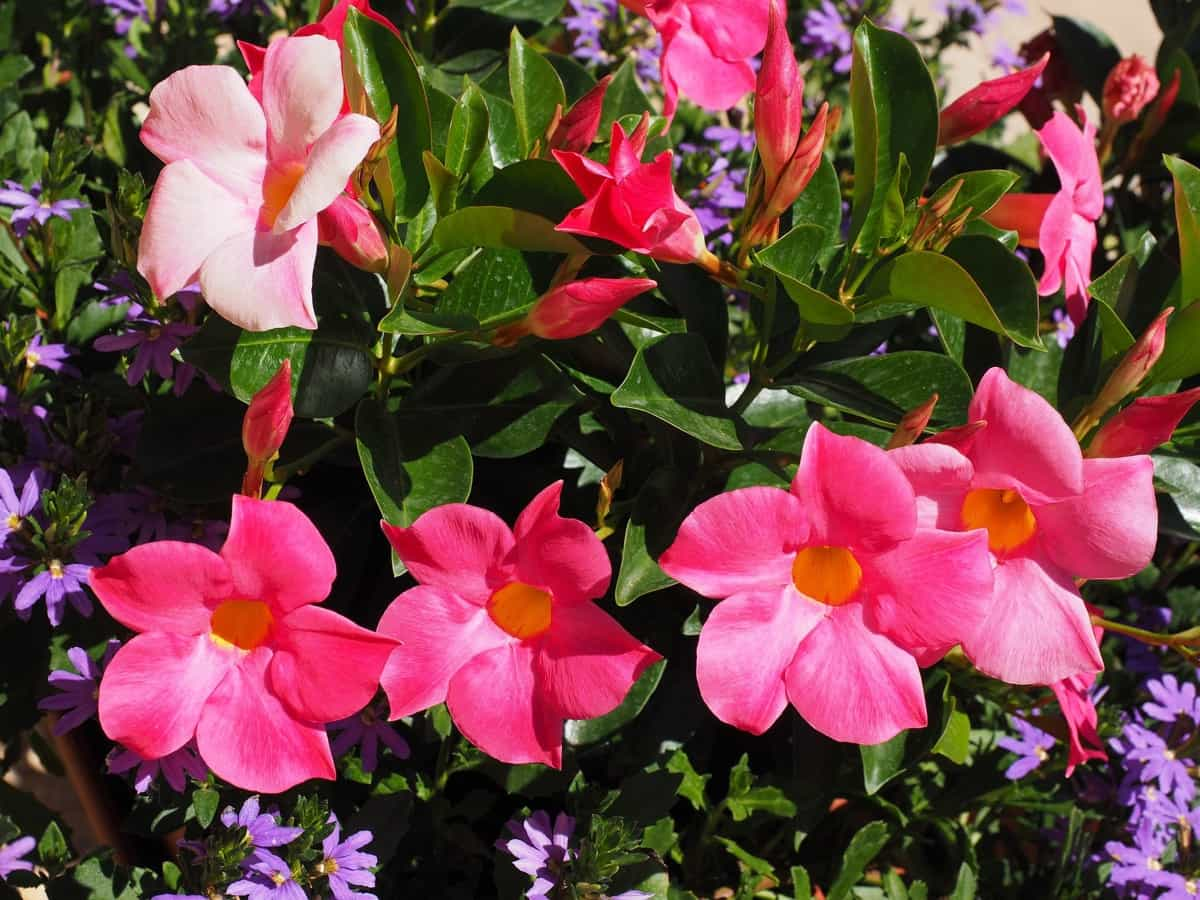
However, too much water can damage the plant, leading to root rot and other problems. As such, it is important to water your Mandevilla plant regularly but not to overdo it. You should generally water your Mandevilla plant whenever the top inch of soil feels dry. Avoid spraying water on the leaves of the plant, as this can encourage fungal growth. When watering your Mandevilla plant, use lukewarm water rather than cold water from the tap. This will help prevent shock to the system that could damage the roots.
Propagating Mandevilla
Mandevilla is evergreen or deciduous climbers with showy flowers. You can grow it as ornamental plants in gardens and parks. Mandevilla can be propagated from seed, cuttings, or division. Seed propagation is the most difficult method and is not recommended for beginners. Cuttings and division are the easiest methods and will produce the same plant as the parent.
From cuttings
To propagate Mandevilla from cuttings, take a 6-8 inch cutting from a healthy stem. Remove all leaves from the cutting except for two or three at the top. Dip the cutting end in the rooting hormone and plant it in a pot filled with moist perlite or vermiculite. Place the pot in a warm location and keep the soil moist. The cutting should root within 4-6 weeks.
From division
To propagate Mandevilla by division, dig up an established plant and carefully divide it into two or more sections. Replant each section in a separate pot filled with moist soil or vermiculite. Place the pots in a warm location from direct sunlight and keep the soil moist until new growth appears.
Transplanting Mandevilla seedlings
When transplanting Mandevilla seedlings, choosing a spot in the garden with well-drained soil and full sun is important. The seedlings should be planted in holes twice as wide as the root ball and at the same depth as they were growing in their previous container. After planting, the Mandevilla seedlings should be watered well and mulched with a layer of organic matter such as compost or bark chips.
In case you missed it: How to Grow and Care for Verbena in the Garden: A Beginners Guide
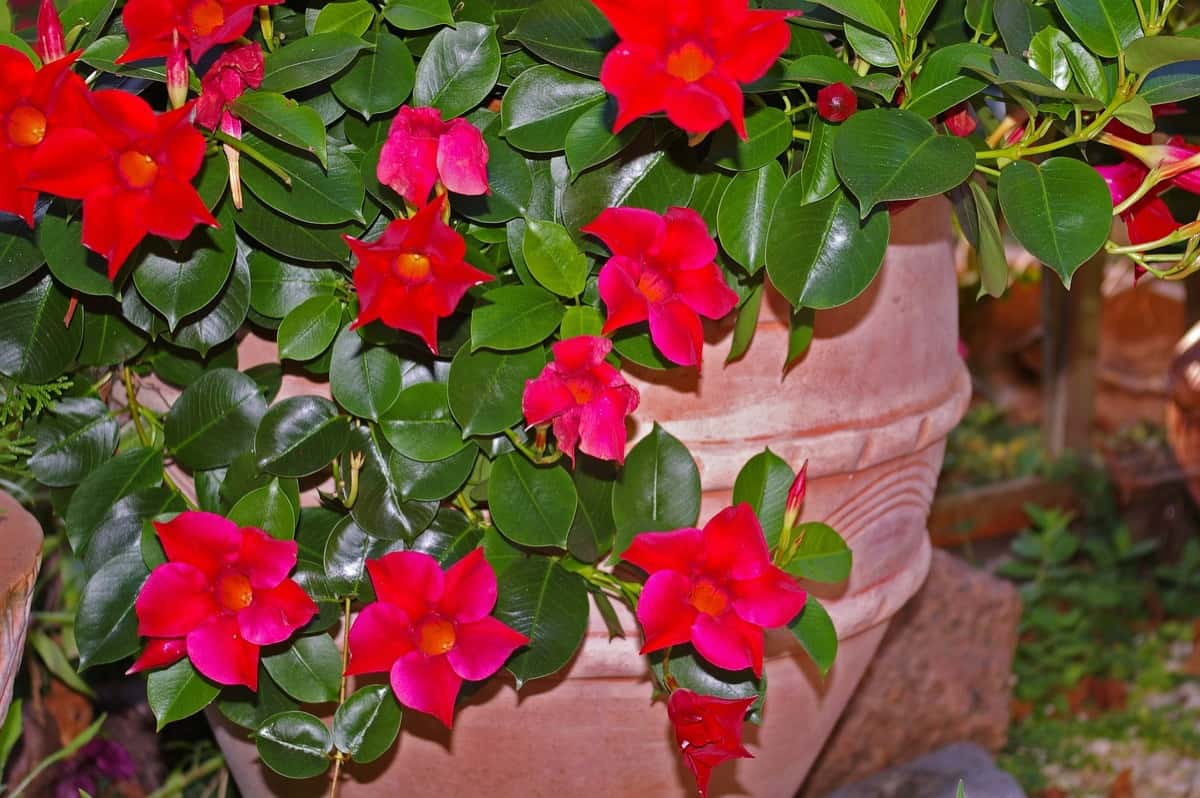
Mandevilla plant care
Fertilizer requirement for growing Mandevilla
To ensure your Mandevilla plant grows healthy and blooms continuously, fertilize it regularly. When fertilizing your Mandevilla plant, you can use a high-phosphorus fertilizer. Phosphorus is an essential nutrient for blooming plants, and it will help your Mandevilla plant produce more flowers. According to the package directions, apply the fertilizer and water it well.
To ensure your Mandevilla plant grows healthy and blooms abundantly, you must fertilize it regularly. Every two weeks, apply a balanced fertilizer during the growing season. In a warm climate, you can grow the Mandevilla plant outdoors all year long and fertilize it monthly. During the winter months, when the plant is not actively growing, you can reduce the frequency of fertilization to once every six weeks.
Pruning Mandevilla
Pruning Mandevilla is an important part of keeping this vigorous climber under control. Blooms will appear on new growth, so prune it in late winter or early spring. Cut all canes to about 18 inches to encourage fresh, bushy growth. If you have a vining Mandevilla, you’ll want to wait until after it blooms to prune it.
Cut back the longest stems by a third to encourage new growth and more blooms. You can also deadhead spent flowers throughout the season to tidy up the plant and encourage more blooms. If you have a bushier Mandevilla, you can trim it lightly after blooming to keep it tidy.
Mandevilla plant care in winter
Mandevilla care in winter is relatively easy. The plant does not need much water during this season and can tolerate some frost. However, it is essential to protect Mandevilla from freezing temperatures by bringing it indoors or covering it with a frost cloth. Additionally, keep an eye on the plant for any pests or diseases and address them immediately.
In case you missed it: How to Grow and Care for Hydrangeas: A Beginners Guide to Planting to Harvesting
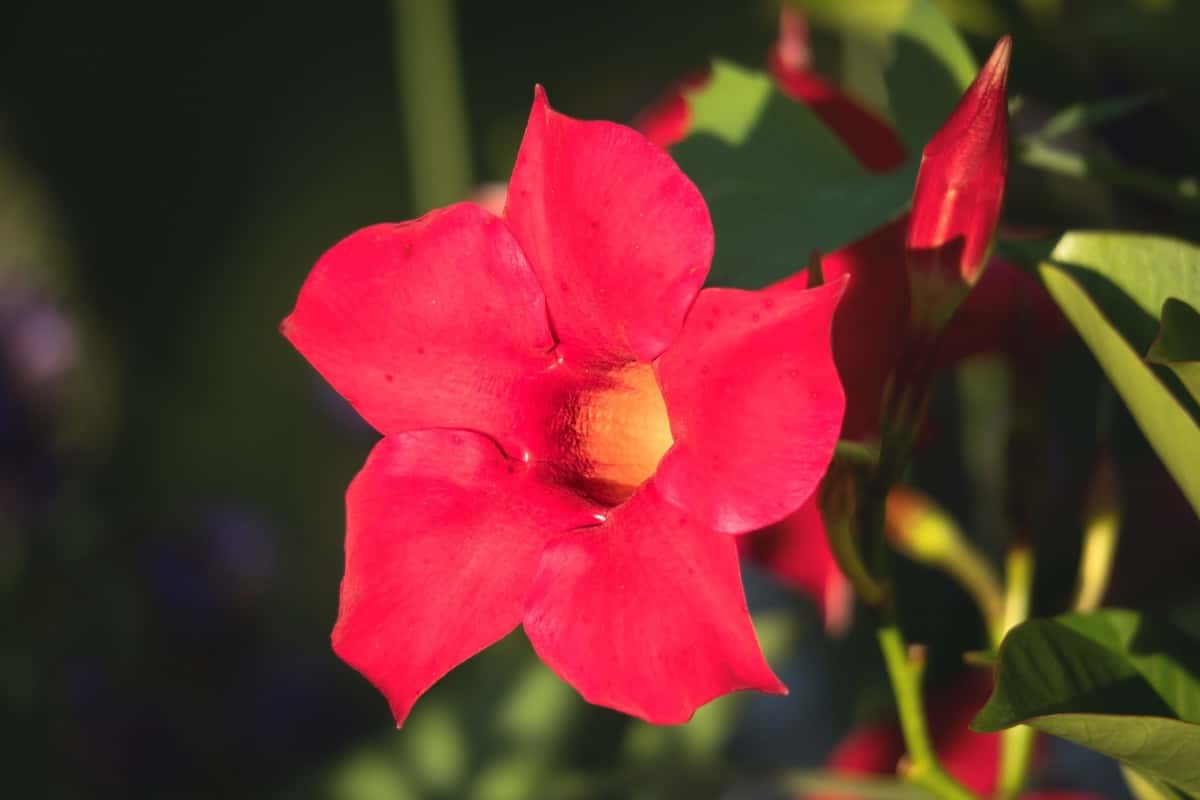
When the weather cools down, you may wonder what to do with your Mandevilla plant. Always water them regularly, as dry conditions can cause Mandevillas to remain dormant. You’ll also want to bring your Mandevilla plants inside during the colder months. Place them in a sunny spot near a window and keep an eye on the temperature. If it gets too cold, they may start to drop their leaves.
Pests and diseases of Mandevilla and their control
Pests and diseases are a fact of life for Mandevillas. While most Mandevillas are tough, disease-resistant plants, they can be affected by pests and diseases. The most common problems include aphids, scale, whiteflies, spider mites, and powdery mildew. Aphids are soft-bodied insects that feed on the sap of Mandevillas. They can cause stunted growth and distorted leaves. Scale is small, hard-shelled insects that suck the sap out of Mandevilla leaves and stems.
They can weaken the plant and make it more susceptible to other problems. Whiteflies are small white insects that fly around Mandevilla plants feeding on the sap. They can cause yellowing leaves and stunted growth. Spider mites are tiny spider-like creatures that spin webs on Mandevilla leaves. They feed on the plant tissue and can cause stippling or discoloration of the leaves.
Powdery mildew is a fungus that covers Mandevilla leaves with a white powdery film. It can stunt plant growth and reduce flower production. Inspect new plants carefully before bringing them home to your garden. Be sure to quarantine new plants for at least a week before adding them to your landscape. You should be aware of the common problems associated with this beautiful flower to keep it healthy and vibrant.
Regular plant monitoring and removal of diseased parts can help prevent pest and disease outbreaks. Natural methods such as beneficial insects or organic solutions like neem oil can also effectively control pests without harming the environment. With a little knowledge and effort, you can ensure your Mandevilla stays healthy all season long.
In case you missed it: How to Grow and Care for Geraniums in Pots: A Beginners Guide to Planting to Harvesting
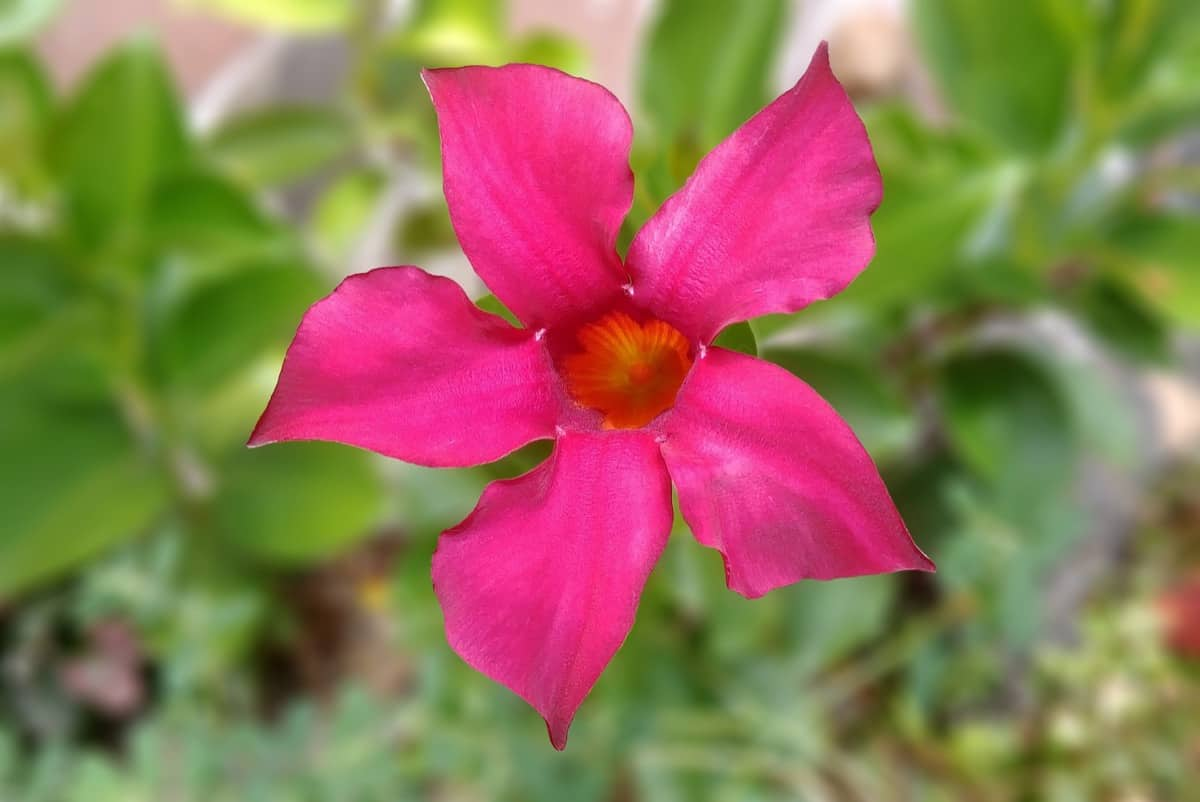
Conclusion
Mandevilla is a beautiful, vibrant flowering plant that can add color and life to any garden. With proper care and maintenance, it will thrive in outdoor environments throughout the summer and fall months. By considering its light needs, water requirements, temperature preferences, soil type, and pruning schedule, you can ensure your Mandevilla remains healthy for many years.
- How to Grow Hibiscus from Flower
- Plantation Ideas for Home Decoration: A Beginners Guide
- Flower Garden Designs and Layouts for Beginners
- Planting and Spacing Techniques in Papaya: A Beginner’s Guide
- Growing Gold: Essential Techniques for Planting Pineapples
- How to Make Kalanchoe Plant Bushy: Home Remedies and Solutions
- 11 Reasons Why Your Gardenia is Not Blooming: Home Remedies and Solutions
- Eco Elegance: The Guide to Designing a Drought-Tolerant Landscape
- Gardening on a Slope: Strategies for Hillside Landscaping
- Nourish and Flourish: Top Organic Mulches for Thriving House Plants
- Everything You Want to Know about Indian Mogra Flower: Discover Uses and Growing
- Green Thumb Success: Expert Tips for Cultivating Greenhouse Pumpkins All Year Round
- Maximize Growth & Flavor: The Ultimate Guide to Companion Planting in Herb Gardens
- How to Control Rhododendron Problems Naturally: Home Remedies and Organic Ways to Fix Them
- Natural Magic: The Remarkable Benefits of Cinnamon for Plants
- Best Steps to Revive Dying Tulip with Natural and Organic Treatment
- 10 Reasons Why Your Angel Trumpet is Not Blooming: Remedies and Treatment
- How to Fix Periwinkle Leaf and Flower-Related Problems: Natural Remedies and Solutions
- How to Fix Zinnias Leaf and Flower Problems: Discover Natural and Home Remedies
- Organic Steps to Induce Lemon Tree Flowers: A Comprehensive Guide
- Bloom Booster: Crafting the Perfect Homemade Bougainvillea Fertilizer
- Optimizing Growth: A Guide to Applying NPK Fertilizer for Potted Plants
- 10 Best Homemade Fertilizers for Rubber Plant: DIY Recipes and Application Method
- How to Boost Female Pumpkin Flowers: Effective Steps for More Flowers and High Yields
- Transform Your Indoor Garden: Top Benefits of Pink Salt for Houseplants
- 10 Best Homemade Fertilizers for Peacock Plants (Calathea): Easy DIY Guide
- Unlock Blooms: 9 Reasons Why Your Potted Chrysanthemum is Not Blooming
- 8 Reasons Why Your Potted Hibiscus is Not Blooming: Fix it with Simple Solutions
- Unlock Blooms: 9 Key Reasons Your Potted Frangipani Won’t Flower
- 10 Reasons Why Is My Ice Plant Not Blooming: Remedies and Treatment
- 10 Reasons Why My Potted Hydrangea Not Blooming: Treatment and Remedies
- 10 Reasons Why is My Wisteria Not Blooming: Remedies and Treatment
- 10 Reasons Why is My Goldfish Plant Not Blooming: Remedies and Treatment
- Maximize Your Space: Ultimate Guide to Balcony Gardening with Grow Bags
- 10 Reasons Why Your Iris is Not Blooming: Remedies and Treatment
- 10 Reasons Why Your Anthurium Plant is Not Blooming: Treatment and Remedies